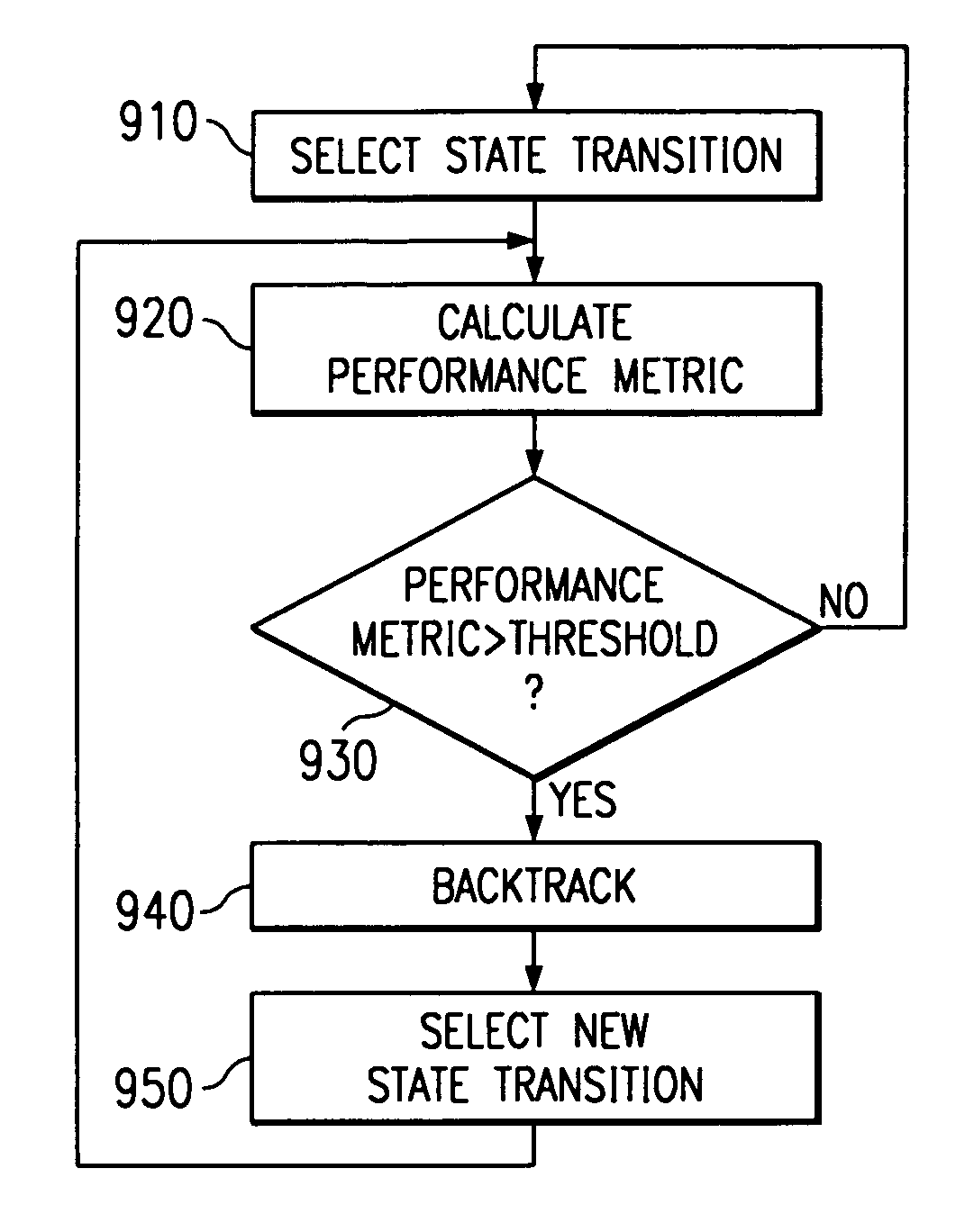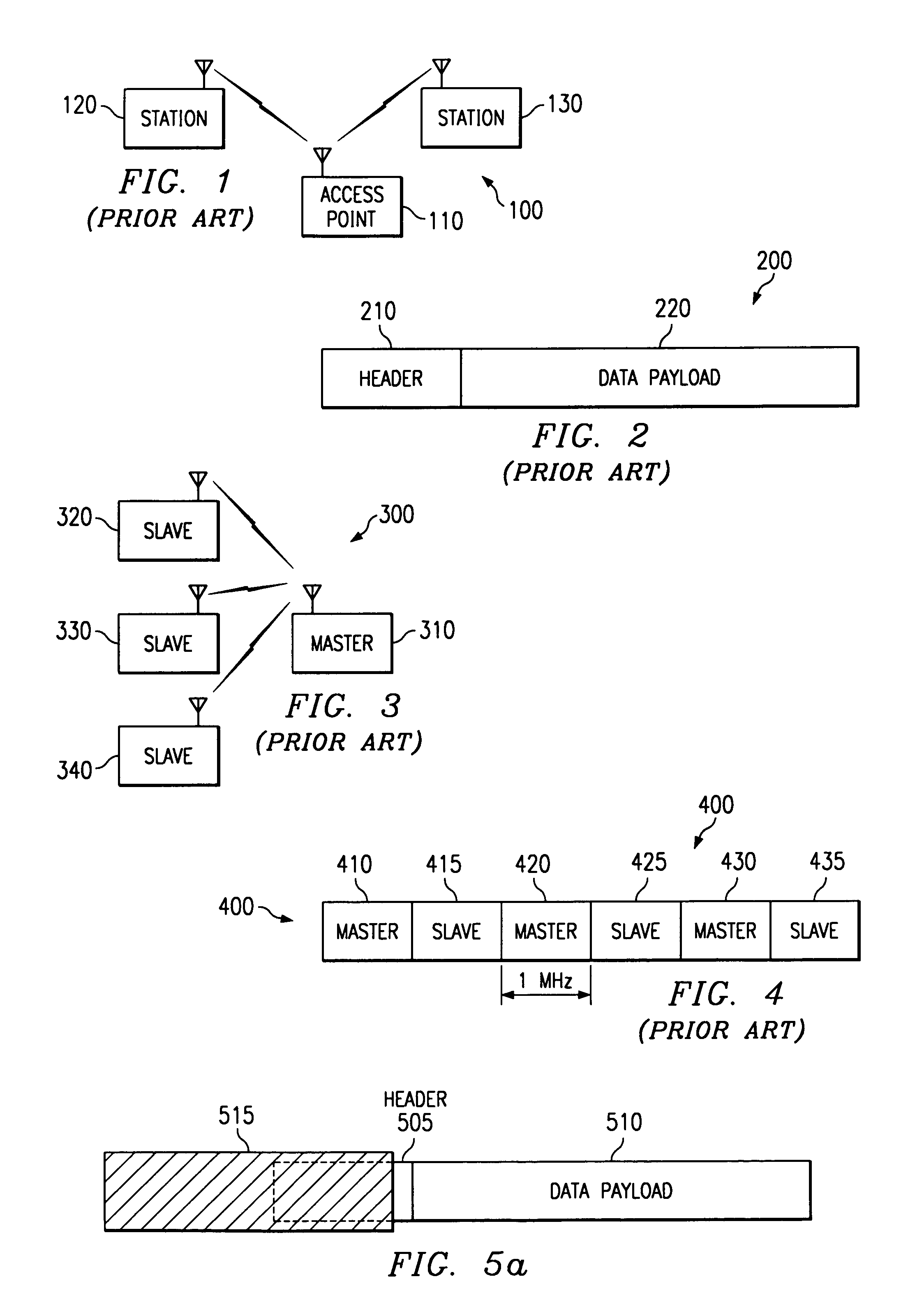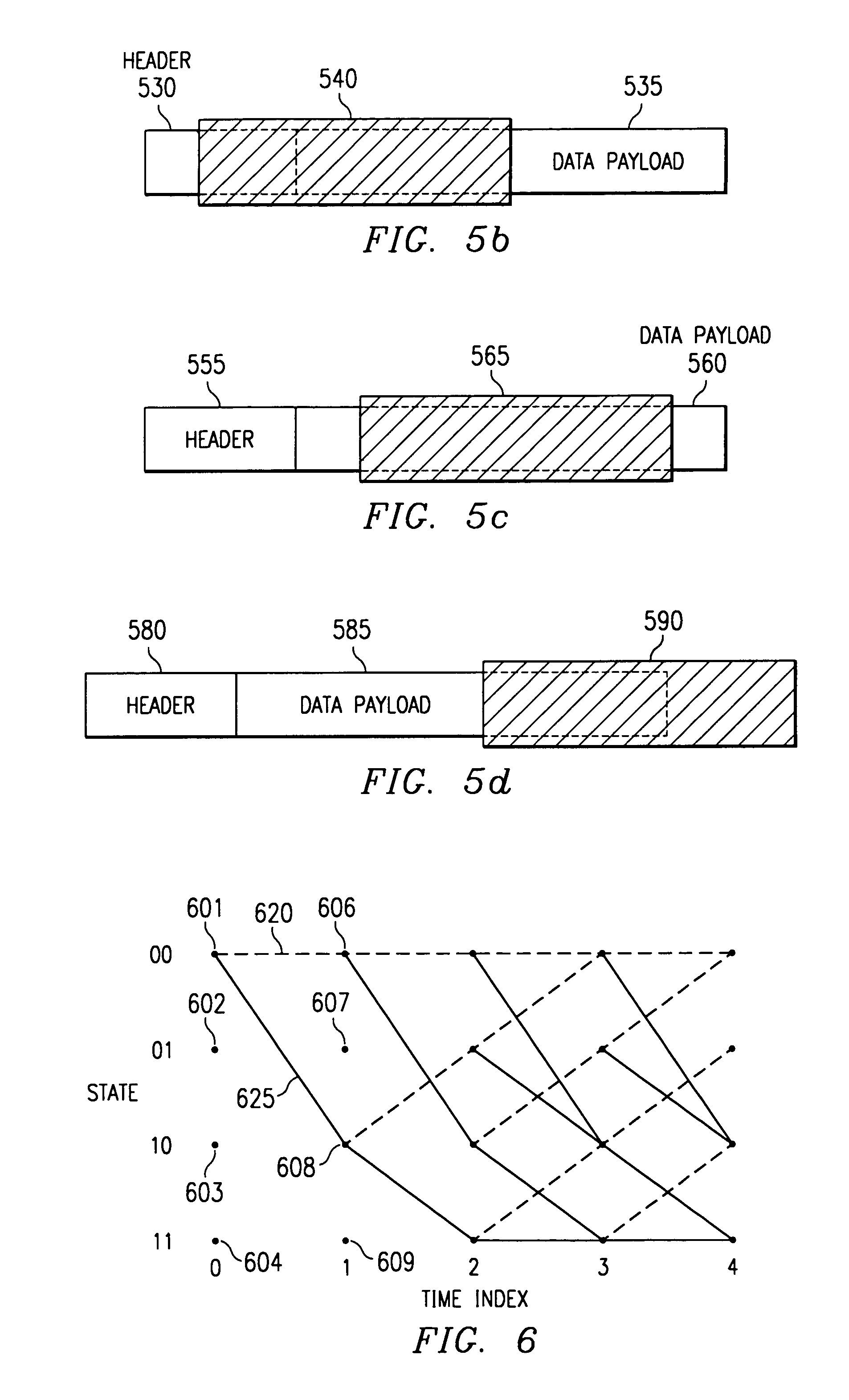Sequential decoding with backtracking and adaptive equalization to combat narrowband interference
- Summary
- Abstract
- Description
- Claims
- Application Information
AI Technical Summary
Benefits of technology
Problems solved by technology
Method used
Image
Examples
Embodiment Construction
[0029]The making and use of the various embodiments are discussed below in detail. However, it should be appreciated that the present invention provides many applicable inventive concepts which can be embodied in a wide variety of specific contexts. The specific embodiments discussed are merely illustrative of specific ways to make and use the invention, and do not limit the scope of the invention.
[0030]Networks adhering to the IEEE 802.11 technical standard and its more advanced version, IEEE 802.11b, are among the most widely available wireless networks today. The IEEE 802.11b wireless network operates in the 2.4 GHz Industrial, Scientific, and Medial (ISM) radio frequency (RF) spectrum band and provides up to 11 Mbps of data transfer rate. The IEEE 802.11 wireless network is specified in a technical standard document, “ANSI / IEEE Std 802.11, 1999 Edition; Information technology—Telecommunications and information exchange between systems—Local and metropolitan area networks—Specifi...
PUM
 Login to View More
Login to View More Abstract
Description
Claims
Application Information
 Login to View More
Login to View More - R&D
- Intellectual Property
- Life Sciences
- Materials
- Tech Scout
- Unparalleled Data Quality
- Higher Quality Content
- 60% Fewer Hallucinations
Browse by: Latest US Patents, China's latest patents, Technical Efficacy Thesaurus, Application Domain, Technology Topic, Popular Technical Reports.
© 2025 PatSnap. All rights reserved.Legal|Privacy policy|Modern Slavery Act Transparency Statement|Sitemap|About US| Contact US: help@patsnap.com



